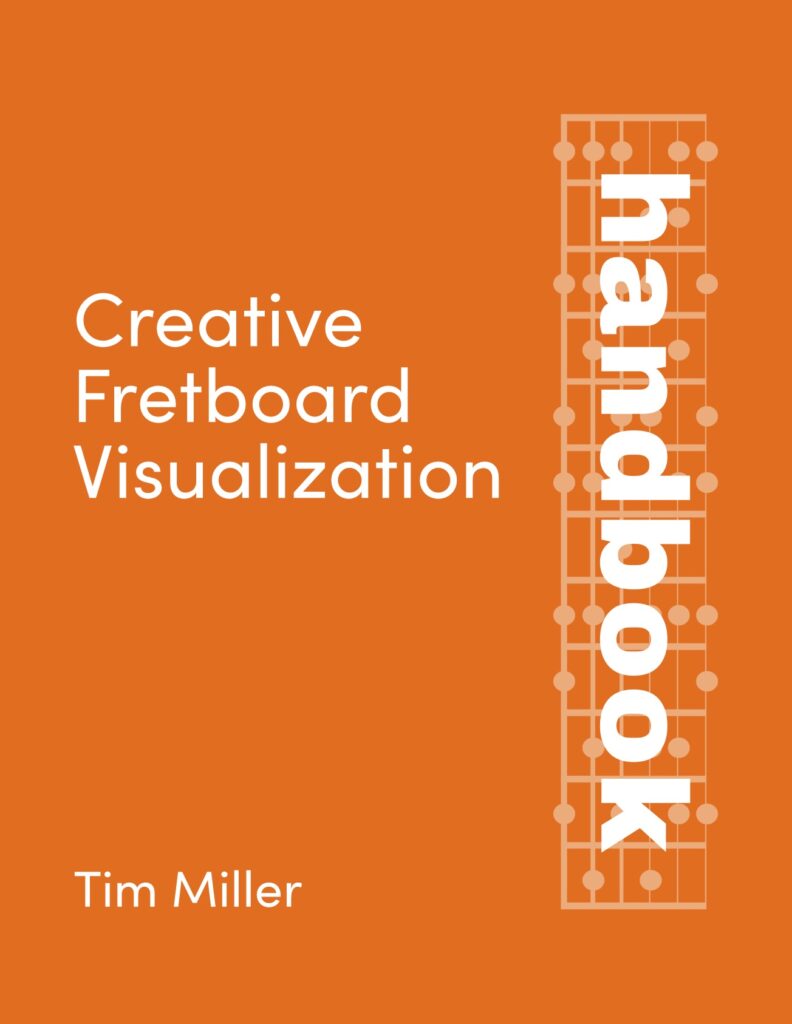
Tim Miller is a unique voice in the world of contemporary jazz and fusion jazz guitar. In addition to his prolific work as a performing musician, he is also active as an educator, not just as a professor at Berklee College of Music, but also via his Tim Miller Music Lessons website and also via his books.
This particular release is one that shares his personal approach to looking at the fretboard. At 142 pages, there’s a lot that Tim covers in this book. However, the most important part of the book is the User Guide chapter from page 9 to 26.
In this chapter, Tim shares concepts such as scales on single string, scales on adjacent strings, 2-1-2 arpeggios and other variations that help you see the fretboard differently beyond just the CAGED system and three note per string fingerings.
The rest of the book contains diagrams for almost all the practical scales that you might want to study: major, melodic minor, harmonic minor, harmonic major, major pentatonic, minor pentatonic, whole-half diminished, half-whole diminished, augmented, and whole tone scales.
It’s important to realize that Tim provides the parent scale fingering and lists out all the possible modes from the parent scale. What this means is that you get one page with the C major scale (within a 12 fret range), which is also the diagram for D Dorian, E Phrygian, F Lydian and so forth.
The exact fingerings are meant to be explored with the suggestions laid out in the User Guide chapter.
Now the question is:
Is it worth getting the book when you could (in theory), draw out all these diagrams yourself and then figure it out on your own?
And my answer is:
You probably could, and even with the book, you will need to do the work to generate your own ideas from this material.
This is very much in the school of Mick Goodrick’s The Advancing Guitarist and Wayne Krantz’s The Improvisor’s OS – which makes sense since Tim was close to the late Mick Goodrick and also co-wrote a book with him.
I would say that if you like how Tim plays and have studied his playing to any degree, then this book might be worth getting. That being said, if you’re the kind of person who needs very specific examples and etudes to study, it might be worth checking out Tim’s online guitar school or get his other books first. Those would give more concrete and possibly easier to digest material for most students.
In conclusion, this is a cool book that gives us an insight into Tim Miller’s creative and clear approach to mastering the fretboard. It certainly can help the right kind of guitarist become even more creative in their melodic and harmonic pursuits.
Pros: Good book with good materials, well organized.
Cons: This is very much a “do it yourself” book, so if the thought of that makes you uncomfortable, do not purchase this book.
TLDR: For adventurous guitarist who dig how Tim plays, this is a good book that reveals more of Tim’s thought process.
Get the eBook here and the physical copy here on Amazon.
[Submissions for Review Consideration]
- Are you an author who wrote a jazz, guitar or music book?
- Have you created a DVD or an online video course or subscription based website?
- Would you like me to review your book/course?
Please send me a message at azsamad2 at gmail.com with:
For courses: a link to the course/video/product + access info etc.
For books: a link to the book (Dropbox) or PDF attachment (if it’s small) for review consideration.
Depending on whether I dig the book/course, I’ll let you know if I do plan to review it!
I cannot guarantee a review for every submission & if I’m not too into it, I may opt not to review it. I mean, it’s better to get a good review that for me to write a bad review just because it’s not a match for the kind of stuff I dig right? :p
NOTE: All reviews reflect my honest personal opinion so be aware that I will point out both cool Pros and Cons that I see in the work. You dig?